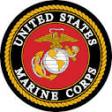Marine Corps issues solicitation for ISR training and exercise support
 On February 3, the US Marine Corps issued a request for quotation (RFQ) (Solicitation # H92257-15-Q-0153) for ISR training.
On February 3, the US Marine Corps issued a request for quotation (RFQ) (Solicitation # H92257-15-Q-0153) for ISR training.
3D Marine Special Operations Support Battalion (3D MSOSB) trains and prepares Marine Special Operations Support Teams (MSOST) for deployments with Marine Special Operations Command (MARSOC) companies and teams. During FY 15, 3D MSOSB will conduct training for MSOST Kilo and Lima. MSOST Kilo and Lima will participate in 3D MSOSB’s led Team Readiness Exercise (TRX), which is the culminating event prior to change of operational control to 3d Marine Special Operations Battalion. TRX is 3D MSOSB Commander’s opportunity to evaluate the MSOST in their ability to provide fused, multi-disciplinary intelligence, communications, and logistics support to their future MSOC Commanders and MSOTs.
The purpose of this Statement of Work (SOW) is to define the need for a reliable and flexible Intelligence, Surveillance, and Reconnaissance (ISR) platform for ISR Tactical Controller evaluation training and special collection during the FY 15 TRXs. ISR Tactical Controller training is critical to prepare the Marines of the Direct Support Team (DST) to deploy and support full spectrum intelligence operations and special operations missions. ISR is also essential in supporting multi-disciplined intelligence training. ISR mission planning and coordination is a crucial part of the team’s ability to plan and direct intelligence operations of the DST.
- The contractor shall provide a surrogate unmanned aerial system (SUAS) platform to simulate theater level unmanned aerial systems (UAS) in order to replicate a realistic, live ISR collection management (requirements and operations) environment that is responsive to tasking. The SUAS will provide a near real time (NRT) full motion video (FMV) / data feed directly to a Multi-Discipline Intelligence Operator (MDIO) within the line of sight (LOS) defined by communications capabilities and receivable on KU digital, C digital/analog, S digital, and L analog communications bands. The data feed must support a moving map function for Geographic Information Systems (GIS) tracking of the platform for mission management. Recorded digital copies of all missions must be provided to the MDIO for post mission exploitation.
- The contractor shall provide 20 mission flight hours per TRX and associated fuel costs. The airborne platform must be configured with an Electro-Optical (EO) / Infrared (IR) payload sensors equipped with a laser range finder (LRF) and laser pointer. The heads up display (HUD) data must resemble metadata typical of theater level assets such as the MQ-1/9 platforms. It must also include information on the platforms location, altitude, sensor orientation, active sensor info (EO/IR). The contractor shall provide closed caption video via a Ground Control Station (GCS) and LOS remote viewing terminal (RVT)
- The contractor shall provide an aircraft that provides capacity to transport up to two individuals and up 100 pounds worth of equipment. The primary mission will still be ISR but with the ability to be dynamically tasked to support or switch to a special collection mission. This would be pre-coordinated prior to the execution of that day’s mission. • The tactical communications capability must be able to support UHF, VHF, AM-FM, HF, SATCOM, and HPW. Preference is SATCOM single channel cypher text.
Full information is available here.
Source: FedBizOpps







